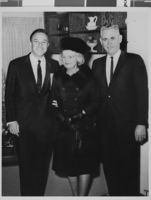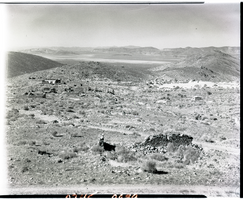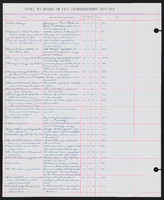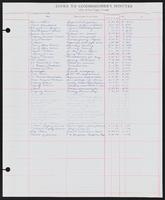Search the Special Collections and Archives Portal
Search Results

Photograph of Mayor Oran K. Gragson, his wife Bonnie with Gene Kelly, circa 1960s
Date
Archival Collection
Description
Image

Film transparency of buildings located on Golden Street, Rhyolite, Nevada, November 25, 1948
Date
Archival Collection
Description
Image

Film transparency of a ghost town, Delamar, Nevada, 1956
Date
Archival Collection
Description
Image
UNLV Libraries Collection of Circus Circus Hotel and Casino Promotional Materials and Reports
Identifier
Abstract
The UNLV Libraries Collection of Circus Circus Hotel and Casino Promotional Materials and Reports includes annual reports, financial reports, newspaper and magazine clippings, press kits, press releases, and promotional materials for the Circus Circus hotel and casinos in Las Vegas, Nevada, and Reno, Nevada, dating from 1972 to 2006.
Archival Collection
Clark County Department of Air Quality and Environmental Management Records
Identifier
Abstract
The Clark County Department of Air Quality and Environmental Management Records (1988-2006) contain materials related to Southern Nevada resource management, air quality, and community planning, particularly related to population growth in Clark County, Nevada. Materials include federal regulations and acts, reports, and land sales, as well as local agency reports, memorandums, workshop pamphlets, maps, and plans.
Archival Collection
Mildred Mann Papers
Identifier
Abstract
The Mildred Mann Papers (1915-1995) contain documents related to her involvement in teaching ceramics and her work with the Independent Order of Odd Fellows. Included are correspondence, newspaper clippings, magazines, certificates, childhood school materials, manuals, photographs, a scrapbook, and newsletters. There are also Clark County Community College (CCCC) class schedules, real estate papers, and membership lists.
Archival Collection
Max DiJulio Music Scores
Identifier
Abstract
The Max DiJulio Music Scores (1950-1993) are comprised of handwritten and printed musical scores by composer Massimo "Max" DiJulio. Max Dijulio composed and arranged musical scores and conducted many concerts throughout the United States, and was particularly active in Denver, Colorado. In addition to the original scores and sheet music, there are also musical composition books with DiJulio's handwritten notes.
Archival Collection
Roosevelt Fitzgerald Professional Papers
Identifier
Abstract
The Roosevelt Fitzgerald Professional Papers (1890-1996) contain the papers and writings of Roosevelt Fitzgerald, a former University of Nevada, Las Vegas (UNLV) anthropology professor and Director of the Ethnic Studies department. Materials include Fitzgerald's educational records, professional correspondence, and documents from his time at UNLV. The collection also contains drafts of his articles on Black history in Nevada and discrimination, newspaper clippings and copies of the Las Vegas Sentinel Voice in which his articles appeared, photographs, and prepared speeches.
Archival Collection


